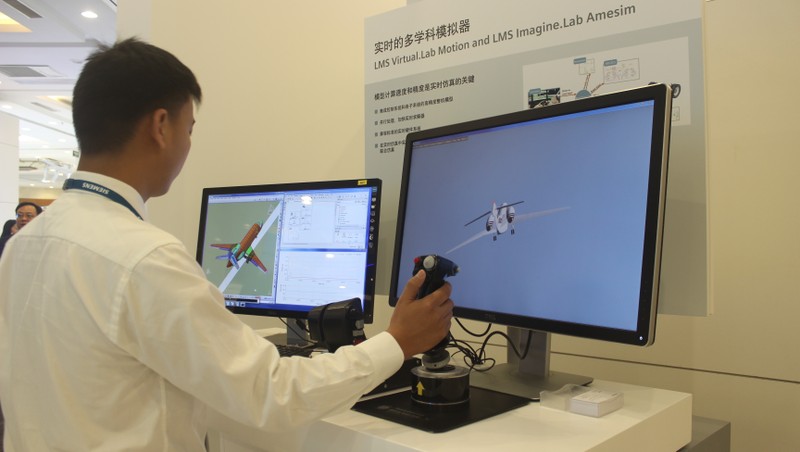In the afternoon of Monday (November 12, 2018), with 100% of votes in favour (469 votes), the National Assembly (NA) passed the Comprehensive and Progressive Agreement for Trans-Pacific Partnership (CPTPP), making the country the seventh nation to adopt this 11-member hallmark deal, after Australia, Canada, Mexico, Japan, New Zealand, and Singapore. Vietnam engaged in the negotiations of the deal inked on March 8, 2018, for eight years.
The CPTPP’s remaining member states including Brunei, Chile, Malaysia, and Peru are expected to ratify the agreement in the near future.
The CPTPP will officially become valid on December 31, 2018, because under its rule, the deal will take effect 60 days after at least 50% of the original signatories have confirmed the completion of national treaty-making procedures. On October 31, 2018, Australia was the sixth nation to adopt this agreement.
Recently, HSBC released a comprehensive survey on the CPTPP’s impacts on global businesses, including 200 surveyed firms in Vietnam. Results showed that 63% of businesses in Vietnam believed that the CPTPP will have a positive impact on their business. Meanwhile, 50% said the deal is closely relevant to their business.
HSBC Vietnam’s general director Pham Hong Hai said that with the US not present in the CPTPP, Vietnam’s benefits may be less than its original version of TPP, for example, GDP will only move up 1.32% instead of 6.7%, exports will increase by 4% instead of 15%.
“However, in general, industries like garments and textiles, leather footwear and labour intensive ones will still benefit. Vietnam will be able to take advantage from accessing to member markets of the deal, especially those on the other side of the Pacific like Canada and Mexico,” Hai said.
Challenges remain
According to many NA deputies like Vu Tien Loc, an NA deputy representing the northern province of Thai Binh, if Vietnam fails to maximise the use of opportunities of CPTPP, the opportunities will not be realised.
“Currently Vietnam is implementing 15 free trade agreements (FTAs), but local firms remain limited in exploiting all benefits from the FTAs. For example, regarding taking advantage of tariff reduction, only 40% of the reduction has been used, but mostly used by foreign firms, while the remaining 60% has failed to be grabbed by Vietnamese firms,” said Loc, who is also chairman of the Vietnam Chamber of Commerce and Industry.
NA deputy Thach Phuoc Binh, from the southern province of Tra Vinh, also pointed out that under the CPTPP, local firms will face harsh competition from foreign rivals on three levels including product, enterprise, and nation.
“Vietnam will have to open its doors wide to foreign products and services. This will surely pressurise Vietnamese goods. Moreover, Vietnamese businesses’ ability to adapt to the market remains week, so they may face failure right here in the domestic market,” Binh said.
Meanwhile, deputy Tran Hoang Ngan, representing Ho Chi Minh City, also sees numerous challenges for Vietnam to implement the CPTPP.
“The government must take a close look at the challenges and risks after the CPTPP takes effect. It is likely that Vietnam’s imports will be far higher than exports following the deal, meaning that we will face a big trade deficit, which is very bad for the economy,” he noted. “We will also need to take drastic actions to control and protect our trade, so that we can prevent a trade deficit.”
To-do list to materialise the CPTPP
According to the National Assembly Standing Committee, after the ratification and within 15 days after the Ministry of Foreign Affairs announces that the deal will officially take effect, the government will require the Ministry of Industry and Trade to combine with other relevant ministries and sectors to make a detailed plan in order to implement the CPTPP “in a proactive, full and efficient manner.”
The key contents of this plan include reviewing and amending the country’s law so that it will be suitable to the CPTPP. The plan also includes the propaganda and dissemination of the deal’s contents to the public, and issuance of various solutions to support enterprises in improving their competiveness, so that they can effectively take advantage of all opportunities brought about by the CPTPP, as well as weathering all challenges during the implementation process of the deal.
To effectively implement CPTPP commitments, the government has asked the Ministry of Justice to combine with other ministries to review and amend the existing laws and regulations and also enact new ones in a manner suitable to the commitments.
Reviewing results showed that 265 legal documents must be reviewed, while seven laws will have to be amended in the time to come, including the Labour Code, the Criminal Code, the Criminal Procedure Code, and the laws on Anti-Corruption, Intellectual Property, Insurance Business, and Food Safety.
According to the World Bank, the CPTPP is expected to stimulate reforms in Vietnam in such areas as competition, services (including financial services, telecommunications, and temporary entry of service providers), customs, e-commerce, environment, government procurement, intellectual property, investment, labor standards, legal issues, market access for goods, rules of origin, non-tariff measures, and trade remedies.
Together, CPTPP countries account for nearly 15% of world trade, and just over 13% of global GDP.
The deal includes chapters that go beyond the scope of traditional free trade agreements to include policy issues related to state-owned enterprises, competition, trade in services, public procurement, transparency and anti-corruption, environment, labour, the digital economy, gender, and small and medium-sized enterprises.
















